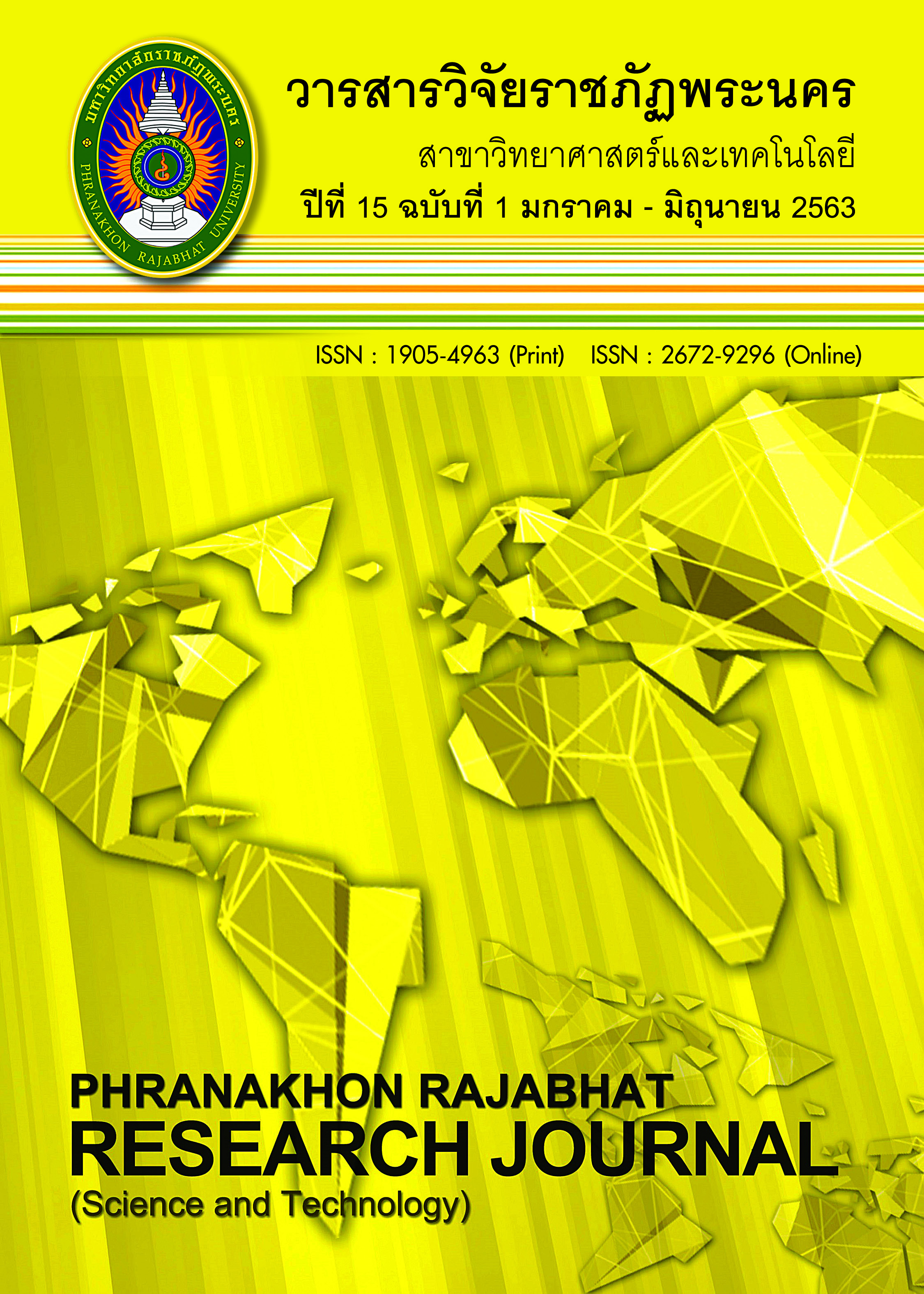The Feasibility Study on Investment of Building Material Installation to Reduce the Electricity Cost From Air Conditioning Consumption
Keywords:
Shading Device, Building Envelope, Air ConditionerAbstract
This research aims to (1) study the use of a shading device to reduce electrical energy of air conditioners in classrooms at Phranakhon Rajabhat University, (2) determine the type of wall shading devices that helps reduce air conditioning electricity cost subjected to the principle of cost-effectiveness, (3) define the break-even point by comparing between the cost of shading devices installation and the reduced electricity cost, and The research was conducted in an air conditioned classroom located on the 3rd floor of the Workshop Building 3, the Architecture program. The classroom is on the west side of the building with a size of 10.00 x 10.00 meters and a height of 2.90 meters from floor to ceiling. The research was conducted by comparing between installing a shading device to protect the classroom from the sun heat entering through a glass wall and no installation at all. The results were that (1) installing the shading device reduced the air conditioning electricity cost was reduced to an average of 13.40 baht per day, which is 3,537.60 baht per year or 8.40%, (2) the wall shading device suitable for reducing air conditioning electricity cost subjected to the principle of cost-effectiveness is ready-made horizontal wooden slat blinds which are fitting for all types of buildings, easy to install and has long period of use, (3) the break-even point was calculated by the price of the ready-made horizontal wooden slat blinds of 12,600 baht divided by the annual electricity cost of 3,537.60 baht, which resulted in the break-even point of 3.5 years.
References
Anubis, (2017). Direction of Seasonal Sunlight. Retrieved May 12, 2018 from https://medium.com/th-cacti-succulents (in Thai).
Kiatiwateeratana, A. (2011). The Effeciciency of Climbing Plants in Reducing Heat Gain Through Solid Wall. Master Program in Architecture. Department of Architecture. Graduate School, Silapakorn University. (in Thai)
Laopanichakul, V. and Srisutapan, A. (2007). The proformance of Climbing-Plant panel for Reducing Heat Transfer through Solid Wall. Journal of Architectural/Planning Research and Studies. Volume 5. Issue 1. Faculty of Architecture and Planning, Thammasart University. (in Thai)
Learning Center of Earth Science and Astronomy. (2017). Mechanism of Heat Transfer. Retrieved May 12, 2018, from http://www.lesa.biz/earth/atmosphere/heat-transfer (in Thai).
Logisticcafe. (2009). What is Breakeven point?. Retrieved May 5, 2018 from จากhttps://www.logisticafe.com/2009/09/break-even-point/ (in Thai).
Nittaya, S. (1998). Tropical Design environment. Chulalongkorn University Printery. (in Thai)
SCB Economic Intelligence Center. (2017). A Key to Success: Progress towards the design of Thai energy-saving Building. Retrieved May 14, 2017 from http://www.plus.co.th (in Thai).
SCG. (2018). Finished Lath. Retrieved May 22, 2018, from https://www.scgbuildingmaterials.com/th/HomeConsult/Blog/new-home/ (in Thai)
Settabut, A. (2014) Ecological Architecture. Faculty of Architecture Chulalongkorn University. Amarin Printing & Publishing Public Company Limited. Bangkok. (in Thai)
Siamtech (2014). The importance of electricity and energy balance. Retrieved May 22, 2018, from http://www.balanceenergythai.com (in Thai)
Thai Olympic Fibre-Cement Co., LTD. (2018). The source of Shera wood data, price per square meter, complete in one place. Retrieved May 22, 2018 from https://www.onestockhome.com/th/ideabooks/shera-wood-how-to-buy (in Thai)
Tritilanun, P. (2006). A study of Shading divice design for 8-story buliding. Master Program in Architecture. Department of Tropical Architecture. Graduate School. King Mongkut’s Institute of Technology Ladkrabang. (in Thai)
Downloads
Published
Issue
Section
License
โปรดกรอกเอกสารและลงนาม "หนังสือรับรองให้ตีพิมพ์บทความในวารสารวิจัยมหาวิทยาลัยราชภัฏพระนคร สาขาวิทยาศาสตร์และเทคโนโลยี" ก่อนการตีพิมพ์




